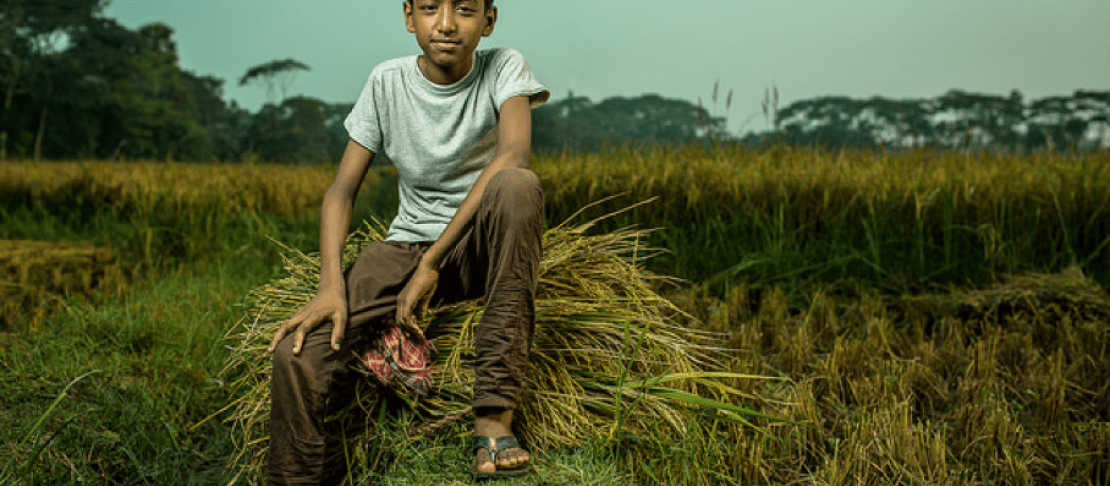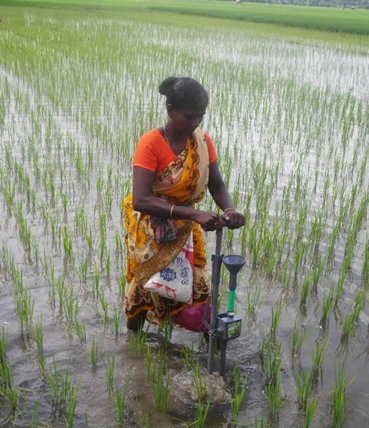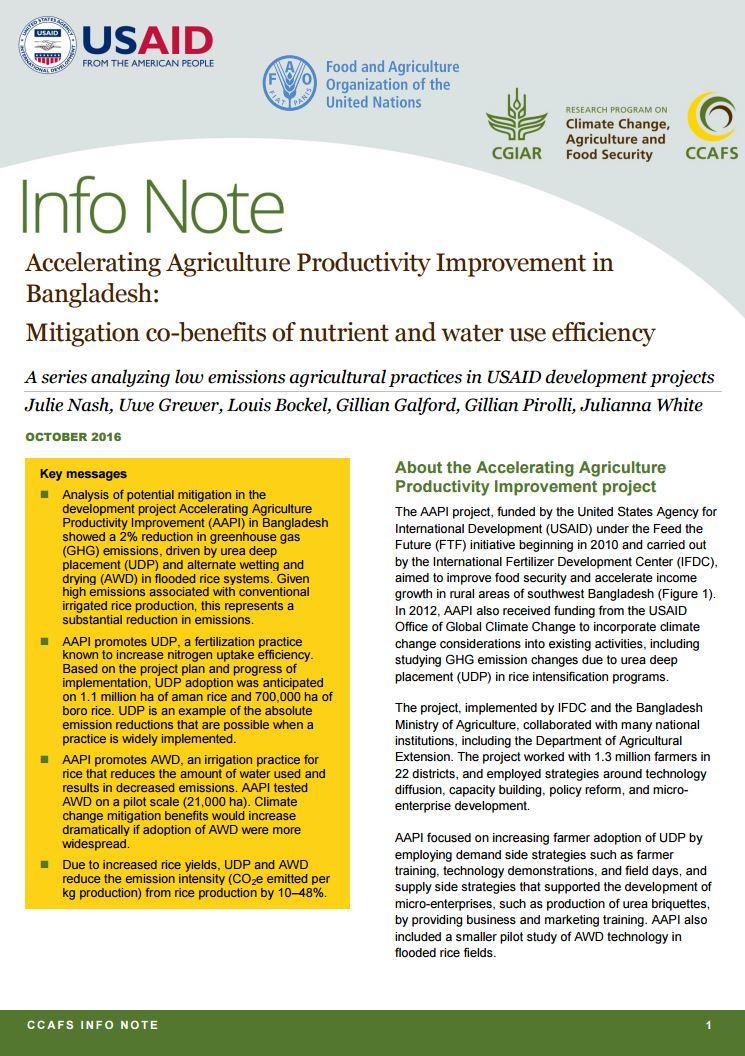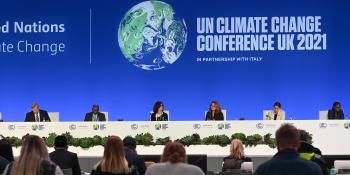Mitigation co-benefits of increased water and nutrient efficiency in irrigated rice in Bangladesh

In Bangladesh, agricultural development practices that increased water and nutrient efficiency in irrigated rice contributed to increased yields, climate resilience and greenhouse gas mitigation.
Irrigated rice represents at least 10-12% of all greenhouse gas emissions from agriculture. 28 Parties – including Bangladesh, China, and Vietnam – pledged to reduce emissions in rice as part of the global agreement on climate change adopted by the United Nations Framework Convention on Climate Change (UNFCCC). With the conclusion of COP 22, the "COP of Action", country leaders are now seeking practical innovations and solutions to meet both their mitigation commitments and food security goals.
Development practitioners and technical experts have the opportunity to contribute to climate change adaptation and mitigation goals. Many agricultural development projects are already in action, providing solid evidence of mitigation co-benefits in the irrigated rice sector.
Characterizing mitigation co-benefits in irrigated rice
The United States Agency for International Development (USAID) engaged the CGIAR Research Program on Climate Change, Agriculture and Food Security (CCAFS) to characterize the greenhouse gas emissions of USAID’s current investments in agricultural development and analyze strategic opportunities for low emission development that complement USAID’s current agricultural investments. CCAFS and the Food and Agriculture Organization of the United Nations (FAO) conducted dozens of analyses and have published nine info notes that quantify the potential climate change mitigation benefits from agricultural projects.
See all of the info notes and the methodology
Accelerating Agriculture Productivity Improvement (AAPI), implemented by the Ministry of Agriculture and the International Fertilizer Development Center (IFDC), aimed to improve food security and accelerate income growth for 1.3 million farmers in rural areas of southwest Bangladesh. AAPI received funding from the USAID Feed the Future and the Office of Global Climate Change.

AAPI achieved significant mitigation co-benefits from changes in irrigation and fertilization practices, reducing absolute emissions by up to 44% and emissions relative to production by up to 48%.
The following agricultural practices promoted by AAPI resulted in changes in GHG emissions:
![]() Farmers who made changes to irrigation practices adopted Alternate Wetting and Drying (AWD), a management practice in irrigated lowland rice characterized by periodic drying and flooding of fields. Submergence of soil and organic residual material in rice paddies leads to anaerobic decomposition of organic matter that releases methane. Periodic drying events interrupt the duration of this process and reduce methane emissions up to a half compared to continuous flooding. In addition, AWD can reduce water use by up to 30%, thus also resulting in water conservation and reduced fuel consumption required for water pumping.
Farmers who made changes to irrigation practices adopted Alternate Wetting and Drying (AWD), a management practice in irrigated lowland rice characterized by periodic drying and flooding of fields. Submergence of soil and organic residual material in rice paddies leads to anaerobic decomposition of organic matter that releases methane. Periodic drying events interrupt the duration of this process and reduce methane emissions up to a half compared to continuous flooding. In addition, AWD can reduce water use by up to 30%, thus also resulting in water conservation and reduced fuel consumption required for water pumping.
![]() Much more widespread in the project was farmers’ adoption of Urea Deep Placement (UDP), an efficient fertilizer practice in which a farmer places a urea briquette about 7-10 centimeters below the soil surface, either by hand or with an applicator. UDP requires less fertilizer and so reduces costs to the farmer and decreases nitrous oxide emissions, while preserving or increasing yields.
Much more widespread in the project was farmers’ adoption of Urea Deep Placement (UDP), an efficient fertilizer practice in which a farmer places a urea briquette about 7-10 centimeters below the soil surface, either by hand or with an applicator. UDP requires less fertilizer and so reduces costs to the farmer and decreases nitrous oxide emissions, while preserving or increasing yields.
Designing programs to incorporate mitigation-co-benefits
The research indicates that AWD packed the most farmer and mitigation benefits per hectare, but it is only appropriate in certain areas and in certain irrigation regimes. It is recommended that countries assess the geographic suitability of AWD as well as the specific barriers to farmer uptake and adoption at scale. Using this information, they can develop social and institutional enabling conditions to foster adoption and explore public or private investments that would be necessary to increase widespread AWD adoption. CCAFS, in a study of benefits and costs of mitigation technologies in paddy rice, found that irrigation infrastructure, practices and policies vary widely – even within countries – and strongly impact farmers’ willingness and ability to adopt AWD.
Likewise, policy-makers and project developers need information about the geographic suitability and farmer incentives and disincentives for adoption of UDP in order to consider where and how large-scale adoption can take place. Can organizations support the introduction of tools suitable for smallholder production systems that reduce the labor intensity of manually placing UDP briquettes? How do agricultural policies (such as government subsidies on fertilizer) impact UDP adoption?

In this photo, a rice farmer utilizes a deep placement applicator to place urea briquettes below the surface of the soil. Deep placement of urea reduces total fertilizer need by increasing nitrogen use efficiency. Photo: AAPI
With evidence of climate-smart agricultural practices, project designers can incorporate agricultural development interventions that have the greatest potential to mitigate climate change and meet food security objectives. In the next phase of this project, the team will further assess the economic and social feasibility AWD and UDP, including what is necessary to overcome barriers and incentives (public and private) to enable farmers to benefit from and implement the new practices.
Learn more:
- ACCESO in Honduras focusing on agroforestry and perennial crop expansion, livestock, and soil and fertilizer management.
- Agricultural Development and Value Chain Enhancement Activity (ADVANCE) II in Ghana focusing on irrigated rice and soil and water management.
- Better Life Alliance in Zambia focusing on on agroforestry and perennial crop expansion, land use including reforestation and avoided degradation, and soil and fertilizer management.
- Chanjè Lavi Planté in Haiti focusing on on agroforestry and perennial crop expansion, irrigated rice, land use including reforestation and avoided degradation, and soil and fertilizer management.
- Pastoralist Resiliency Improvement and Market Expansion (PRIME) in Ethiopia focusing on livestock.
- Resilience & Economic Growth in Arid Lands - Accelerated Growth (REGAL-AG) in Kenya focusing on livestock.
- Rwanda Dairy Competitiveness Project in Rwanda focusing on livestock.
IRRI GHG Mitigation in Rice: information kiosk
CCAFS project: Low-emissions opportunities in USAID agriculture and food security initiatives
Julie Nash is a scientist at the Gund Institute for Ecological Economics at the University of VermontScientist and Project Leader for Pathways for Low Emissions Development Project with CCAFS Low Emissions Agriculture.
Julianna White edited this blog.




